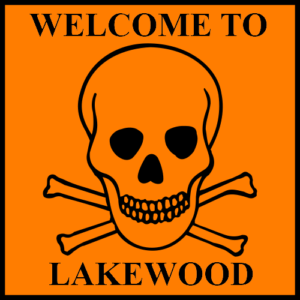 A warehouse is about to be developed on 123rd Street, in Lakewood’s Springbrook neighborhood. Are there toxic substances on the property, specifically PFAS? To my knowledge, the results of any testing have not been released.
A warehouse is about to be developed on 123rd Street, in Lakewood’s Springbrook neighborhood. Are there toxic substances on the property, specifically PFAS? To my knowledge, the results of any testing have not been released.
Lakewood is being poisoned, and the actions of private developers could make the problem worse.
The poisons in question are per- and polyfluoroalkyl substances, commonly known as PFAS. It is well know than PFAS are extremely toxic. They are associated with a variety of cancers, thyroid disease, low birth weight and infertility. In 2016, the Environmental Protection Agency set a safe limit of 70 parts per trillion for drinking water. In June, the EPA reduced these limits for some PFAS substances, to effectively zero parts per trillion.
A recent scientific article in the Journal of Hepatology Reports considered the impact of PFAS on liver health. The study found that high exposure to one PFAS, perfluorooctane sulfonic acid, increased the odds of getting liver cancer by 4.5 times.
Perfluorooctane sulfonic acid (PFOS) is used in fire-fighting foams, of the kind that are frequently used on airbases. For example, on Joint Base Lewis McChord (JBLM).
Thousands of gallons of foam have been splattered around JBLM, and they have contaminated the immediate environment. Not only has the soil been contaminated, but also Lakewood’s s precious water resources.
The City is well aware of the problem. In July 2020 The Tacoma News Tribune wrote that
Lakewood Water District is suing the U.S. government, including the Department of Defense, the Air Force and the Army as well as 13 manufacturers, including 3M and DuPont, of firefighting foam used on Joint Base Lewis-McChord that leaked into the groundwater supply.
The clean-up is going to be an expensive process, with the Water District envisioning that over the next 50 years it will cost over $377 million.
Still, we can’t have PFAS getting in the way of progress. The area next to JBLM, which includes Springbrook, has been rezoned as industrial, and on 123rd Street the real estate developer Panattoni is about to build a warehouse.
The warehouse will be built on an 8.88 acre plot, which is part of a flood plain and a sole source aquifer recharge zone. Over 100 Garry oaks will be cut down, and 85% of the property will be covered with impervious surfaces, according to the project’s SEPA Checklist.
Underneath the property is groundwater — measured at just six feet below the surface — which is most likely contaminated with PFAS. If there is a major flooding event, this possibly contaminated water will be dispersed across a wide area, and the poisoning of Lakewood could be intensified.
This raises the question of how likely it is that there will be such an event. The original estimate was once in 500 years. It was then found, because of climate change, that it was once in 100 years. However, estimates have been changing, and the next estimate might be 20 or even 10 years. In some places, supposed 100-year floods have been coming every three or four years.
Assuming 100 years, there is a 50% chance of a major flooding event in the next 69 years. Assuming 20 years, there is a 50% chance in the next 14 years. Assuming 10 years, there is a 50% chance in the next 7 years and a 10% chance in the next year.
The City of Lakewood, in rezoning Springbrook, and allowing development on 123rd Street, is gambling on Lakewood’s future. It’s putting the interests of developers before the interests of the City’s residents.
Lakewood’s City Council members don’t seem to care. Maybe they are not interested, or they regard it as a risk worth taking. Especially as none of them live in Springbrook.
However, you should care, and you and your family should think very carefully about whether you really want to live in this poisoned city.